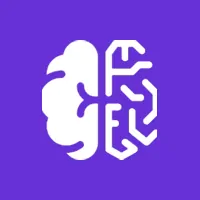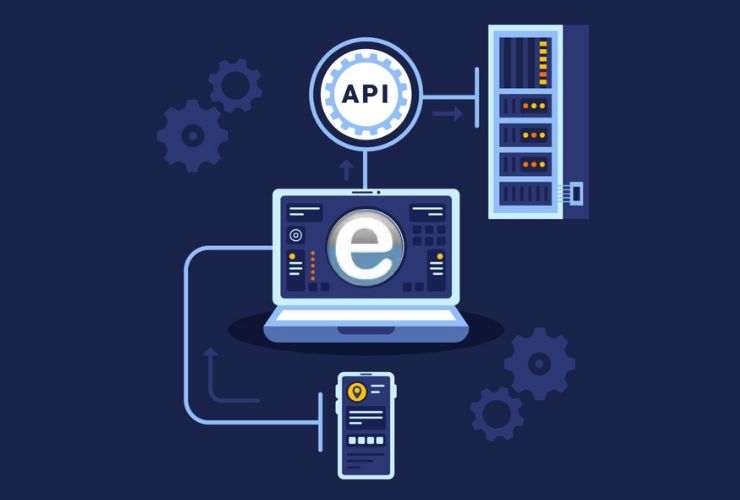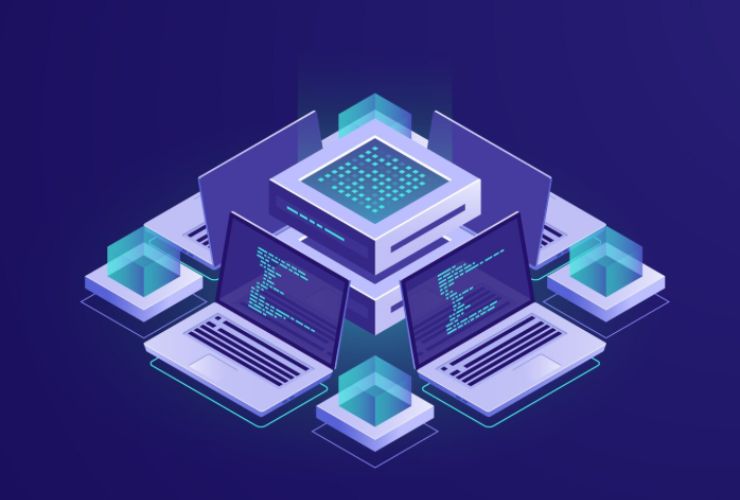This is altering the face of the modern digital software because innovation, to a very good extent, nowadays is controlled and paced by technology, and together the combination would definitely bridge scalable facets from Node.js to AI/ML intelligence. Hence, a very new domain emerges for smarter applications fast and responsive.
Node.js is no longer an asynchronous and event-driven system but a highly sought-after platform to introduce AI/ML solutions. Being able to serve multiple requests concurrently, along with a rich ecosystem, Node.js has empowered developers to build applications that deliver high-performance robustness with advanced AI-driven features.
In this blog post, we will explore what makes Node.js the ideal choice to integrate with AI/ML and some of the perfect tools, libraries, use cases, and best practices for an AI/ML combination to excel.
Why Choose Node.js For AI/ML Integration
Increasing demand for integrating AI/ML capabilities in a software product drives developers to a platform that easily handles such high-level complex calculations and tasks due to heavy processing of data. Some of these notable features of Node.js include the following:
1. Scalability and Performance
Node.js’s non-blocking architecture allows for smooth concurrent request handling, making it perfect for running machine learning models that process large datasets or require real-time decision-making. Its scalability supports distributed computing, which is necessary for modern AI workloads.
2. Rich Ecosystem of Libraries and Frameworks
Node.js grants access to the vast library and frameworks, including TensorFlow.js, Brain.js, and Synaptic. Developers can write, train, and deploy AI/ML models using JavaScript. This eliminates code language changeovers as well as the intricacies involved with this process.
3. Cross Platform Compatibility
Node.js applications can run on different platforms without major changes. Thus, the deployment of AI models becomes quite seamless across environments like web servers, desktops, and IoT devices.
4. Real-Time Data Processing
AI and ML are obsessed with real-time data. Node.js’s event-driven programming can effectively work on streaming data analysis. It is extremely apt for applications involving predictive analytics, fraud detection, and real-time recommendations applications.
Important Tools and Libraries of AI/ML Integration with Node.js
A successful integration of AI/ML into Node.js comes with the fact that there is a strong toolkit and library set. They help make the development simple while amplifying the application’s performance.
1. TensorFlow.js
This is a JavaScript library, which brings the power of TensorFlow right to the browser and Node.js. Developers can use TensorFlow.js to build, train, and deploy machine learning models directly, and hence, is an all-in-one solution for AI implementation.
2. Brain.js
This lightweight library actually simplifies how one can do neural networks thereby making tasks like the recognition of image, prediction, and text with data classification a much easier task to do. Extremely easy to use makes it a superb recommendation for developers fresh to machine learning.
3. Synaptic
It’s a brilliant Node.js neural network library allowing for flexibility in the development and training of many kinds of network architectures. Its use with JavaScript is very easy, and it can easily be integrated with projects already built.
4. Natural
A library to be used with NLP, offering tools on tokenization, stemming, classification, even sentiment analysis. This makes it a must-have for text-based applications that utilize AI.
5. ONNX Runtime
ONNX Runtime enables developers to embed pre-trained models from prominent AI frameworks, such as PyTorch and TensorFlow, in Node.js applications. It connects the training and production environments.
Practical Uses of Node.js in AI/ML
Node.js is used by industries because it can be flexible with AI workloads. The major applications are mentioned below.
1. Chatbots and Virtual Assistants
Node.js is powering AI-based chatbots which can provide contextual responses in real-time. Organizations can create smart conversational interfaces for customer care, lead acquisition, and other applications using platforms like Botpress or Microsoft Bot Framework.
2. Predictive Analytics
Finance, healthcare, and eCommerce operate on predictive analytics for the correct decision. Node.js can deal with big data with ML models for precise prediction.
3. Image and Video Analysis
The creation of Node.js makes possible real-time image and video analysis jobs such as facial recognition, object detection, and motion tracking. This is widely used in surveillance, gaming, and augmented reality applications.
4. Natural Language Processing
This makes applications like Natural and TensorFlow.js allow Node.js to do the job of sentiment analysis, text summarization, and language translation based on user interaction.
5. IoT and Edge Computing
Because Node.js is lightweight and processes information in real time, it perfectly fits for infusing AI/ML into IoT-based devices. This will lower latency and the dependence on the cloud because it is going to process data in a local mode.
To take all the features of AI/ML in Node.js, there are some best practices that a developer should pursue.
Choose the Right Library
If your project requires or has complexities, pick the libraries associated with it. For example, TensorFlow.js is deep learning while Brain.js can be used in simpler tasks.
Optimize Data Handling
Use streams in Node.js to handle large data because this will not boost the huge memory used in the process and hence increases its performance.
Utilize Pre-Trained Models
Development time is reduced by using pre-trained models from sources like TensorFlow Hub or Hugging Face.
Scalability
Design applications to scale, that is, to handle growing traffic and data as your AI/ML models evolve.
Monitor and Optimize Performance
Use monitoring tools such as New Relic, PM2, or Apex to track application performance and proactively address bottlenecks.
Challenges of AI/ML Integration with Node.js
The following are the challenges that come with the power combination of Node.js and AI/ML:
- Performance Bottlenecks: Running complex ML models on Node.js may require optimization or offloading heavy computation on external services.
- Lack of Community Support: Although this is growing, the Node.js AI/ML ecosystem is far behind the size of its counterparts using Python frameworks.
- Debugging Complex Workflows: Debugging and optimizing AI/ML workflows could be far more challenging in a JavaScript environment.
Conclusion
This is where integrating AI and machine learning changes how applications are constructed and delivered; using solid tools, libraries, and frameworks, the Node.js ecosystem creates an intelligent solution with scalability and a high-performance structure that would make it efficient to meet modern businesses’ requirements.
From real-time chatbots to predictive analytics systems, the marriage of Node.js and AI/ML is unlocking endless possibilities for innovation. This is because as technology keeps evolving, embracing this synergy will enable developers to remain ahead in the competitive landscape of web and software development.














